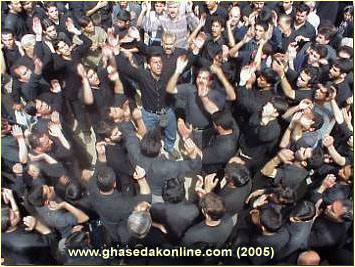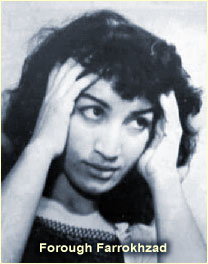Issue 19
مهرآفرین حسینی
دانشجوی روانشناسی دانشگاه تورنتو
Mood disorders are among the most prevalent mental disorders of our time with destructive and enduring consequences. Depression, according to the American diagnostic system (DSM-IV) criteria, is described as a state of extremely depressed mood, which includes “cognitive symptoms” and “disturbed physical functions” to the extent that make the activities of everyday life overwhelming for the person. Cognitive symptoms encompass feelings of worthlessness or hopelessness, and loss of interest in pleasurable activities of life (such as socializing). Disturbed physical functioning includes major loss of energy, changes in appetite and weight, and altered sleeping patterns (Barlow & Durand, 2002).
Psychological and social dimensions of depression can be directly related to culture. Culture is involved in production of personal schemas or worldviews for each individual and in that way influences their interpretations of reality, their judgments and behaviours. Expression of depression is distinct across cultures. Young (1997) explains it is not the symptoms that are different but rather the emphasis placed on various distresses. What symptoms an individual concentrates on depends on the person’s value system or world schema. Since values systems are influenced by culture, depressed patients from various backgrounds may have varying presentations of the disease.
Good, Good and Moradi’s (1985) anthropological study on interpretation of depressive illness among Iranians nicely illustrates how cultural elements can affect the expression of depressive symptoms and discourses presented by the patients in therapy. The site of this field research was Maragheh –a Turkish speaking town in Iran. Authors were primarily concerned with the dysphoric discourses embedded in the various subcultures of Iranian culture. They characterized three cultural discourses of dysphoria. The first discourse involves the concept of self and personal depth. Authors realized that in the Iranian culture, being sad means being thoughtful and expression of sadness in the appropriate cultural context and manner is valued. To Iranians, being sad shows that one can understand the “tragedy” that defines this life. The second discourse, embedded in Iranian Shi’ism, presents grief as “a religiously motivated emotion”, related to injustice in the world and the loss associated with unjust death of sacred Imams –or religious leaders. The third cultural discourse stems from a particular subculture that authors labeled as

the Modern Secular Tradition. These non-religious intellectuals, writers, poets and filmmakers present a different discourse on dysphoria that is based on the struggle of an individual to maintain self-integrity under repressive social conditions. This notion is metaphorically depicted in the following verses from an Iranian modern female poet, Forough Farrokhzad.
Why did they call sounds speech?
Why did they welcome the glance
into the house of vision?
Why did they carry caresses
to virginity’s timid hair?
Look how here
the soul of a person who uttered words
and whom a glance caressed
and whose shying away caresses calmed
has been nailed to the scaffold
of beams of misgivings
and how the tracks of your five-finger branches
which were like five words of truth
have remained upon her cheeks.
What is silence, what is it,
what is it, o dearest one?
What is silence but unspoken words?
I am bereft of speech,
but the sparrow’s language
is the language of life, of flowing sentences
of nature’s celebrations. (Hillmann, 1987, p.127)

Authors realized that even though grief is embedded within the Iranian culture through these discourses, Iranians still have a clear notion of pathological grief as a disease and separate from the cultural sadness. However, by analyzing the Iranian depressed patients, many similar themes could be identified in their discourses in therapy.
Iranian immigrants with depression in the United States were their main target. Iranian immigrants usually express sadness over loss of home and culture, and struggle to maintain inner purity and adhere to cultural roots while at the same time relate to the American social order, which is not in accordance with their culture. Authors suggested that the experience of immigration ‘turns on’ the well-developed cultural grief discourse because it has many elements similar to the religious and secular discourses of dysphoria. It “necessitates grief work” and leads to depression through making the interpretation of the immigration experience a dysphoric one. Authors concluded that depression has a distinct character and expression in Iranian culture (Good, Good, & Moradi, 1985). One patient case presented in this article is a refugee named Mr. Tehrani. He articulates the dysphoric discourse quite nicely in his talks in therapy:
“People in Iran are ghamgin [sad] because of the system, history, dictatorship. They cry easier than they laugh. It is because of the culture; it is deep. When you understand sadness, you understand people better. Right now, Iranian people understand happiness is very good, because they are sad. Now that I’m sad, I understand what happiness is… we say if people have an easy laugh, it is because they don’t understand this life doesn’t have a point to it. We understand tragedy better. Out history is tragedy- tragedy after tragedy. Dr. Mossadeq for instance. Right now Khomeini’s system is based on tragedy: Cry and be sad! The entire sense of the tragic and of tragic character is Iranian. You too have to understand tragedy if you want to socialize with people…” [Good, Good, & Moradi, 1985, p. 396-397.]
This study is a good example that illustrates the interplay of culture and expression of depression. Even though the experience of depression for Iranian patients was similar to the DSM-IV criteria (and there is an equivalent word for depression in Persian language, afsordegi), manifestations and underlying elements were unique to the culture. Thus, cultures can have their own unique ‘style’ of depression and understanding the meaning behind the symptoms can aid in diagnosis and treatment of depressed individuals within each culture.
References
Barlow, David H. & Durand V. Mark. “Abnormal Psychology, 3rd ed.”. Wadsworth
Thompson Learning: Canada. 2002.
Good, Byron J., Good, Mary-Jo DelVecchio, & Moradi, Robert. 1985. The Interpretation of Iranian Depressive Illness and Dysphoric Affect in “Culture and Depression”, ed. by Kleinman, Arthur, & Good, Byron. University of California Press: U.S.A. 1985.
Young, Dykes M., M.D. 1997. Depression in “Culture and Psychopathology: a Guide to Clinical Assessment”, ed. by Tseng, Wen-Shing & Streltzer, Jon. Brunner/Mazel, Inc.: New York. 1997.












